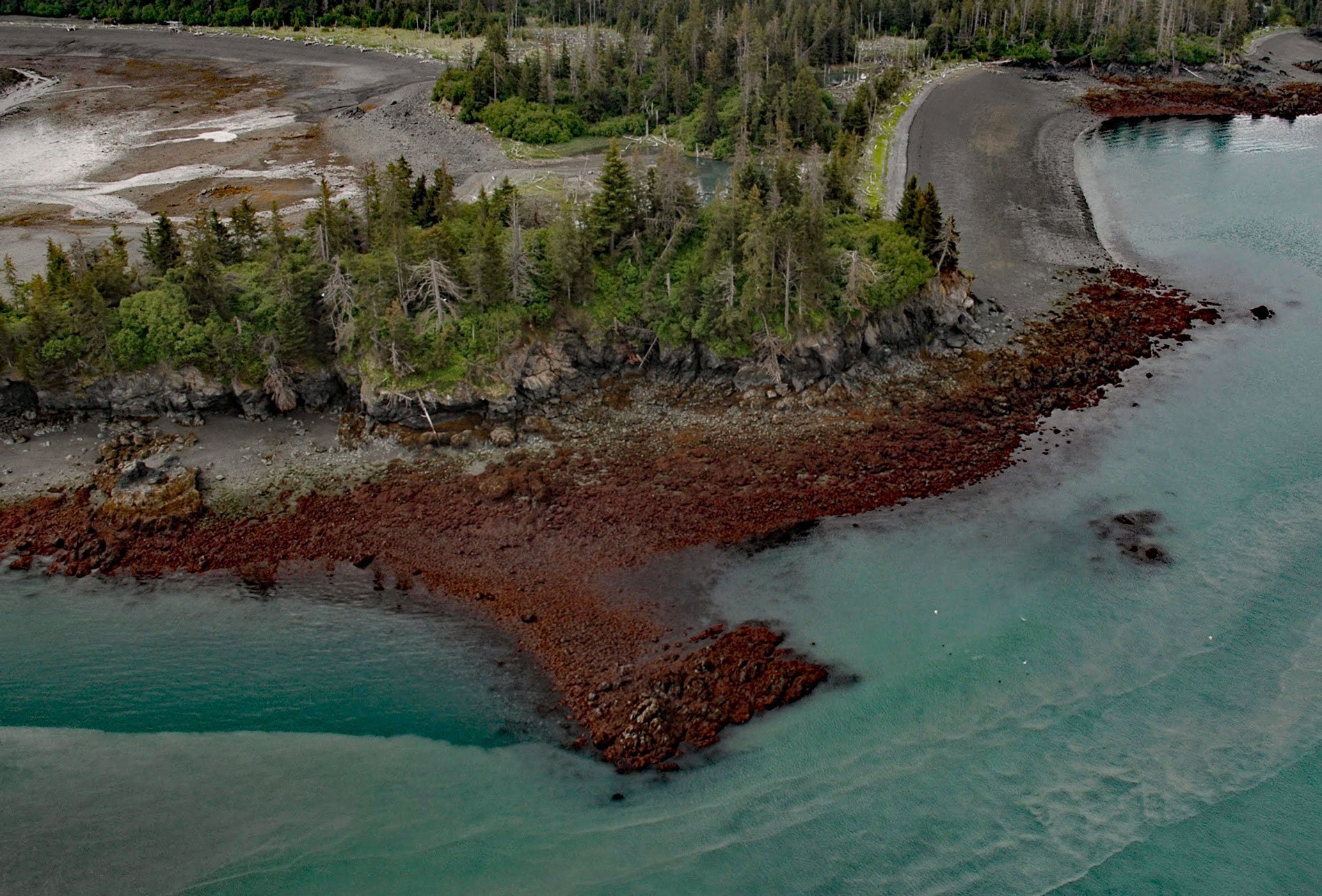Lancashire Rocks are a group of offshore rocks and reefs on the western edge of Neptune Bay along the eastern shore of Kachemak Bay, about 13 miles (21 km) northeast of Seldovia and 8 miles (13 km) southeast of Homer, Alaska. The reefs were named by William Healey Dall in 1880 for the yacht Lancashire Witch owned by Sir Thomas Hesketh that visited Cook Inlet that year. On some charts, McKeon Rock is shown as one of the largest and furthest offshore of the Lancashire Rocks.
The Lancashire Witch was built as a private vessel in 1878 by R. Steel & Company of Greenock, Scotland to a design by St. Clare John Byrne for Sir Thomas George Fermor-Hesketh, the 7th Baronet. She was named after the novel about the Lancashire Witches by William Harrison Ainsworth, a romanticized account of the Pendle witches published in 1849. The vessel was of composite construction built with an iron keel, stem and stern posts, and iron framing, but with wooden planking. She was a three-masted auxiliary schooner with square-rigged sails on the foremast only and a two-cylinder compound inverted steam engine of 75 hp. In 1879, Sir Thomas Hesketh made a world cruise in Lancashire Witch, visiting Alaska in 1880. She was subsequently sold and there were 3 other owners between 1883 and 1892 including Frank Linsly James who explored Africa, India, and Mexico with the yacht. In 1894 the Lancashire Witch was purchased by the British Admiralty and became the survey vessel HMS Waterwitch.
Waterwitch was converted for use as a survey vessel and commissioned in 1894 for service on the Australia Station. On 1 September 1912, while lying at anchor off Singapore, Waterwitch was struck amidships by the personal launch of the Governor of Singapore. The launch’s sharp prow pierced Waterwitch’s wooden side and she sank in 24 feet (7.3 m) of water. The wreck was raised on 10 September 1912 and taken to drydock at Tanjong Pagar. She was then sold to Captain Giovanni Gaggino who converted the vessel to a private yacht that was renamed, Fata Morgana. Read more here and here. Explore more of Lancashire Rocks here:

